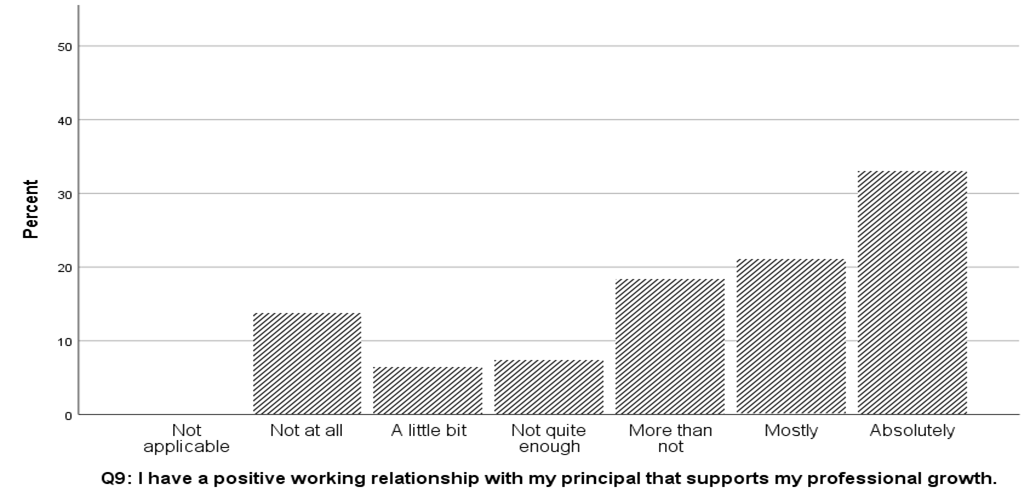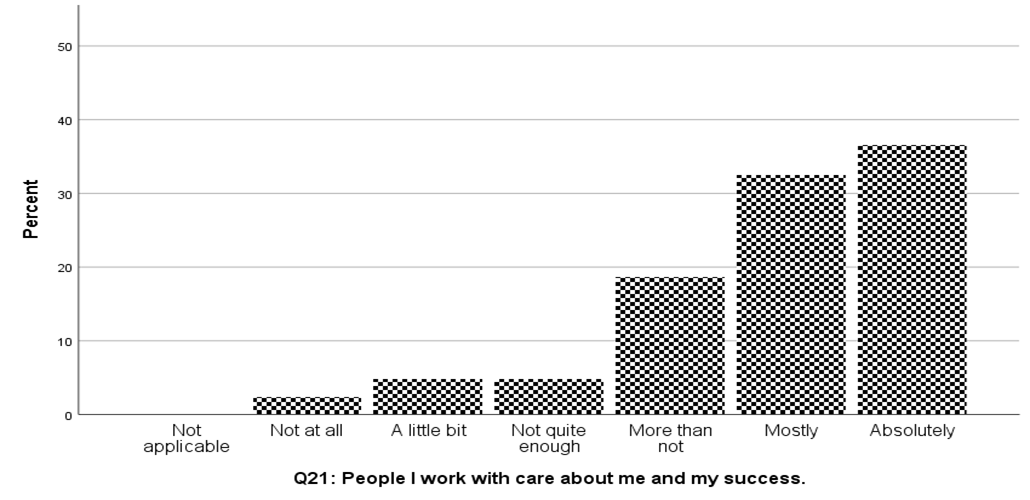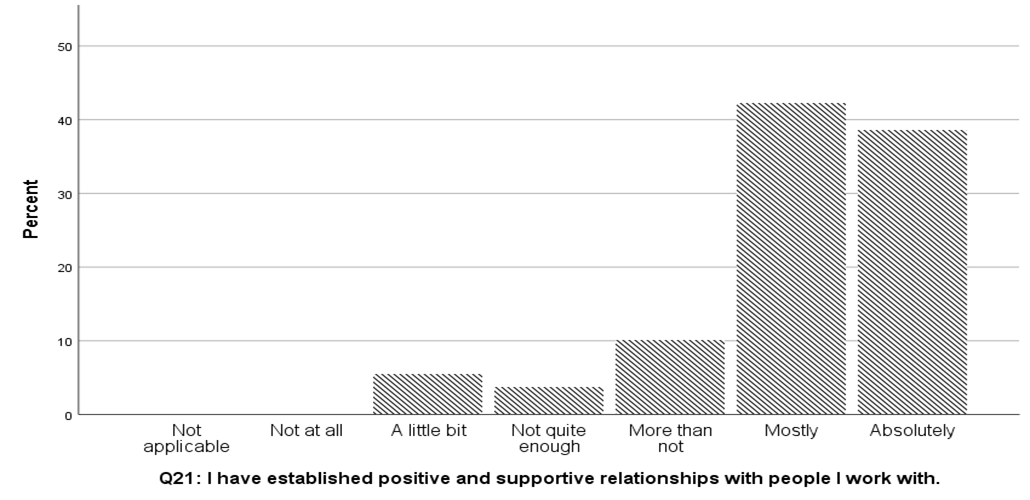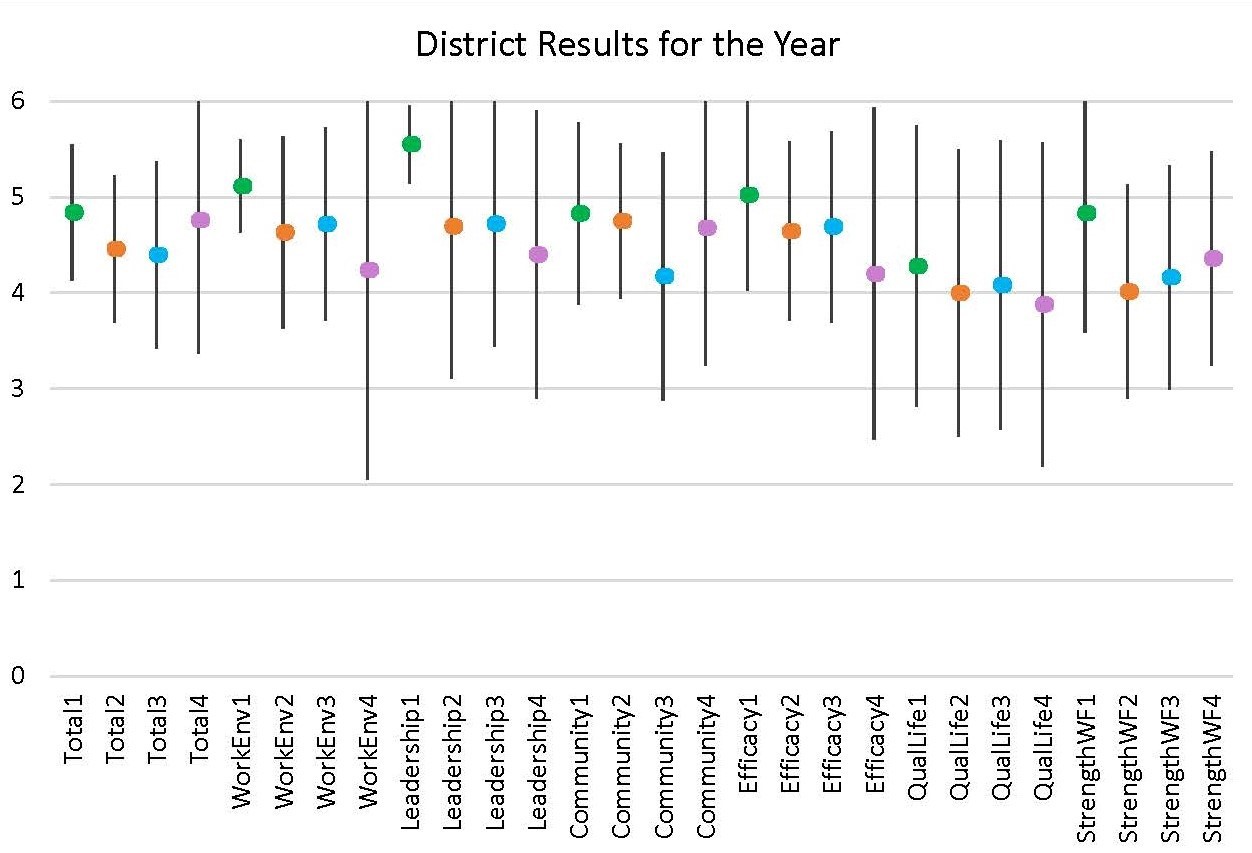Perhaps you’re a superintendent focused on accomplishing the priorities of the board and addressing leadership issues. As the board’s executive leader, you work hard to build and sustain a productive relationship with each board member and the board as a whole. You regularly communicate with the board about day-to-day operations, as well as student outcome data. The same realization your board members have about the lack of results gnaws at you, too, although you diligently deploy the district’s resources to achieve desired results. You wonder why the results you work so hard to achieve remain unrealized.
Have you ever thought that the answers may not be the establishment of another program, a list of new strategic goals, or a redesign of professional development? Maybe there is a new way, a different way. We know in our leadership roles that we have limited resources to work with, so to get desired results, we may have to allocate those resources differently. We also know the most significant resource we must create change is our workforce. We believe you can capitalize on your existing workforce and move in a new direction by tapping into this yourself. This leads us to consider strengthening your organizational culture to ignite systemic change.
For example, in the fields of business and government1, organizations have discovered that a shift in culture is more important than the old ways of making changes. By transforming relationships, priorities, processes, and commitments, they have engaged employees in new ways to optimize the work environment, fix organizational problems, increase employee commitment, and develop strong teams. We share one way of doing this by taking a research-based, collaborative approach that has been rigorously tested in Alaska during the past two years.
Capitalizing on your workforce
Although it’s almost always a stated priority, organizational efforts to gather valid workforce data that (1) unites leaders and employees and (2) resolves high-value organizational issues typically accomplishes neither of those goals. The commonly used workforce surveys and exit interviews face three significant challenges. First is the fear of retribution. Employees must feel safe about giving their genuine perspectives and knowing that their privacy and thoughts are protected, or they will not provide accurate, useful information. The second challenge has to do with trust. Employees must trust the data and feel confident it will be processed and reported honestly and accurately. The third challenge involves how to use the data in order to support the engagement of organizational leaders and employees in ways that get beyond the us-against-them mindset and that produce useful collaborative change.
Our project supports leaders and employees to confront these challenges together by gathering employee input, reporting it in a collective employee voice, and providing opportunities to support leader and employee engagement. The Team Optimizing Project, or TOP, uses a research-based approach and confidential third-party data gathering by means of voluntary participation. We gather employee data several times a year via short, online surveys, quickly analyze it, and report results to all members of surveyed workforce groups and organizational leaders. We then debrief results with leaders and facilitate their exploration of strategies for engaging employees in collaborative dialogue that builds upon their identified successes with a view to tackle tough issues, solve problems, and strengthen teams.
We are sharing our work with you as a model to demonstrate how you can introduce a new approach that will strengthen relationships and improve results in your district: TOP is a proactive approach to leadership and workforce engagement that increases organizational clarity, expands leadership focus, and leads to workforce success. TOP accomplishes all that through three solution-oriented beliefs built into the approach and the implementation that can support your own transformation.
1. Employee voice strengthens teams
Thousands of employee insights and comments from the front lines of the workforce have made it clear that employee satisfaction hinges on being heard, understood, and taken seriously. Nothing is more important than feeling like a valued and contributing member of a team that pulls together.
Voice of the Employee
by Jerry Covey
I know you’re busy, but you need to listen.
Listen, listen to the strong, listen to hear the weak, listen to hear the past, listen to hear the future.
Come closer, pay attention to me, I’m trying to tell you something. Listen to hear my hopes, listen to hear my dreams, my struggles, my wins, and my losses. Listen to hear what works and what doesn’t.
I might be angry, I might be tuned out or feel ignored, but I want to be part of something good. I want to be a player on the team, I want to succeed, I want the people I work with to succeed, I want our team to win.
Listen, please hear me, listen.
Real employee engagement begins with understanding, appreciating, and responding to things that get in the way of employee success—not necessarily the things in the strategic plan or the outcome goals. TOP’s data-gathering and data-sharing processes bring workplace strengths and weaknesses to the forefront in a transparent and honest way and invite meaningful engagement between leaders and frontline employees.
2. Timely, reliable, and useful data empower equally
TOP empowers all ranks of an organization with the same data at the same time, multiple times throughout the work year. Ongoing thematic questions document patterns of leader-employee and employee-employee relationships. The following examples demonstrate how TOP captures and applies never-before-accessible information in a K-12 public school district over a short window of time.
The bar graphs for question 9 show that in two months’ time, teachers were less satisfied with their principal-teacher relationships and the communications that supported their work. Changes in the results invite collaboration on how to improve communication practices.


Question 21, by contrast, shows that teachers began the year feeling connected to their colleagues and that at midyear, that connection was even stronger. Understanding and building on why that’s happening lead to a win-win situation for leaders and employees.


The following candlestick chart shows trends for each category surveyed over the course of the year. Each color represents the time of year surveyed, and the labels underneath identify the category. The response options shown at the left were 6–absolutely, 5–mostly, 4–more than not, 3–not quite enough, 2–a little bit, 1–not at all, and 0–not applicable. The colored dot represents the average score across respondents, and the length of the line represents the standard deviation—a measure of the variability between respondents. To understand the trends, consider the Work Environment (WorkEnv1–4) category, which remains high (all higher than 4.0) despite seeing changes across the year. In contrast, consider the Strengthening the Workforce (StrengthWF1–4) category, which shows a drop from the first to the second survey and then an increase afterward.
This snapshot provides a quick and comprehensive view of the results. It allows for everyone to understand the collective experience the employees are having in the district. Together these results provide board members, superintendents, and employees with insights never seen before in the education sector.

When reflecting on the year, one superintendent commented on how the results had empowered employees.
We were concerned that these discussions would be intimidating; however, the opposite occurred. Staff expressed appreciation for the feedback and for the opportunity to discuss their experiences.
3. Leadership development supports team development
Our proactive, two-pronged approach to leader–employee engagement recognizes that leaders need support regarding how to hold conversations about real-time data covering their professional relationships, work environments, and levels of workplace satisfaction. TOP prepares leaders to engage with employees on data that bring to the forefront meaningful conversations around organizational, employee, and leader actions that are connected directly to results. With equal importance, TOP prepares leaders with tools for hands-on, collaborative engagement with employees that builds a team capable of addressing the identified issues.
In today’s world, authority does not automatically translate to influence. TOP provides leaders with the data and the tools to engage employees at the level where influence can happen. Supporting leaders to build teams that collaborate provides the opportunity to strengthen the organization. Teams become high functioning when all employees have the same information and are given the opportunity to participate in shaping the organization’s future.
Collaborate for innovation and success
We are currently on the forefront of a shift from working in silos or as individuals to working as collaborative teams. Complex problems and issues are best handled by a collaboration that leads to innovation and improved results. It’s clear that transformation and improved results require this type of engagement. And school districts, too, can benefit from applying those same strategies.
We have given an example of how to engage in these strategies. Our model captures and measures ongoing changes in employee perceptions. It supports actions that translate to a strengthening of the culture of an organization. And it takes advantage of changes in organizational behavior over time to transform attitudes and beliefs. TOP increases organizational clarity, expands leadership focus, and leads to workforce success. Envision what would happen if leaders and employees engaged with one another in ways that strengthened teams, supported change, and produced desired results.
Consider taking a bold step and writing a new story for your district, school, organization, or department. Create a narrative that values all employees for what they can contribute. Write a story that builds positive relationships on shared aspirations, meaningful involvement, and positive outcomes. Build lasting success from the inside out.
Jerry Covey (jscc@gci.net) is an author, CEO, and consultant whose practice focuses on education, government, nonprofit leadership, and organizational success. His more-than-40-year career has included diverse teaching, administrative, local, and state-level leadership positions, as well as service on state boards and commissions. He has been characterized as a great listener, passionate advocate, and effective persuader who helps clients meet customer and organizational needs.
Barbara Adams (badams.aas@gmail.com) has conducted education research in Alaska for 20 years. As a mathematician and statistician, she has engaged in many projects by applying her unique skills in the areas of culturally relevant curricula, mentoring, family math nights, and school and district support. She has served as a school board member in her local school district for more than 10 years, has sat on a regional education board, and been a member of several advisory committees.
1. For examples of organizations, see the following references.
- Allas T, Checinski M, Dillon R, Dobbs R, Hieronimus S, and Singh N. (2018). Delivering for Citizens: How to Triple the Success Rate of Government Transformations. Discussion paper: McKinsey & Company; https://www.mckinsey.com/industries/public-sector/our-insights/delivering-for-citizens-how-to-triple-the-success-rate-of-government-transformations.
- Baldrige Performance Excellence Program (2017). 2017-2018 Baldrige Excellence Framework: A Systems Approach to Improving Your Organization’s Performance. Gaithersburg, MD: US Department of Commerce, National Institute of Standards and Technology. https://www.nist.gov/baldrige.
- Coyle D (2018). The Culture Code: The Secrets of Highly Successful Groups. New York, NY: Bantam Books.
- Dempsey M and Brafman O. (2017). Radical Inclusion: What the Post-9/11 World Should Have Taught Us about Leadership. USA: Missionday.

Share this content